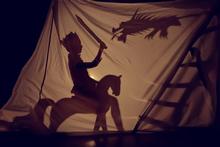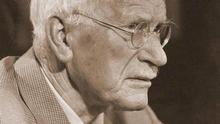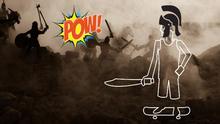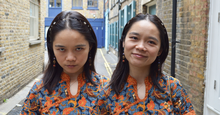Archetypes and Personality Type
The Empirical Relationship between the PMAI® and MBTI® Tools
This is the second article in a three-part series discussing the relationships between Jung’s theories of archetypes and psychological types, as assessed by the Pearson-Marr Archetype Indicator® and Myers-Brigg Type Indicator® instruments, respectively. The first article discussed the ways the theories of archetype and type converge and diverge—how they overlap and where they are distinct. This current article presents the results of a large, correlational study between the PMAI® and MBTI® tools. The third article in the series will discuss insights from our qualitative research and workshops.
When considering the relationship between Jung’s concepts of psychological type and archetypes, there are several common-sense predictions we might make when thinking about how results on the MBTI and PMAI assessments would be linked statistically. For example, an obvious prediction is that a high score on the Caregiver archetype would correlate with a preference for Feeling on the MBTI instrument. Another prediction might be that a preference for Thinking would score low on the Caregiver and Lover archetypes.
Both predictions were met in a large correlational study we conducted of over 1000 people who took the PMAI instrument and self-reported their MBTI type. Of the sample, preferences for Intuition (81%) and Introversion (64%) were predominant, while preferences for Thinking-Feeling and Judging-Perceiving were split more evenly, though slightly higher for Feeling and Judging. Of note in our sample is that of the 16 MBTI types, Sensing types had only 11 to 45 respondents linked with the 12 archetypes.
This preponderance of Intuition in the PMAI sample indicates that people who prefer Intuition tend to take assessments such as the PMAI more than people who prefer Sensing. And this would be predicted, as people with a preference for Intuition tend to be more open and curious about abstract concepts and drawn to symbolic ideas. Those with a Sensing preference, on the other hand, are drawn towards the literal and concrete and would be predicted to tend to avoid symbolic systems.
The following analysis discusses the correlations between the high and low scores each of the 16 MBTI types had on each of the 12 PMAI archetypes. We calculated the average score, or mean, of each archetype for each group of people who reported the same type. In other words, the mean is the average score on each archetype scale of everyone in the sample who reported preferences for ESTP, for example. Whole types with the highest means had the highest scores on that archetype; the types with the lowest means had the lowest scores.
Caregiver. The highest mean for Caregiver were the types ESFJ and ENFJ. The lowest means were INTP and INTJ. These results would be expected. These dominant Extraverted Feeling types embody the extraverted, empathic, helping person, and the INT types represent autonomous intellectuals who keep to themselves.
Creator. Types dominant in Intuition lead in the scale means for Creator, as would be predicted: ENFP and ENTP. The results were split first between Intuition and Sensing, and second between Perceiving and Judging, whereas types with preferences for Intuition Perceiving showed the highest means. This makes sense, as Intuition and Perceiving together represent people who are open imaginatively and intellectually and would be expected to identify as being creative.
Idealist. The results for Idealist were split along the Extraversion–Introversion preference, with seven of the eight Extraverted types showing the highest means (except for ESTP). The highest means were ESFP and ESTJ. Unexpected in these results for Idealist is that the mean scores fell along the Extraversion–Introversion preference rather than the Intuition–Sensing preference. The prediction was that a preference for Intuition would score higher than a preference for Sensing, yet Extraverted Sensing types scored higher than types with a preference for Intuition.
The psychological type most symbolic of the Idealist is INFP, yet this type is among the lowest scores. The very lowest means are with ISTP and INTJ, which fall along more expected lines as these are two hard-nosed intellectual types. These unusual results for Idealist may reflect anomalies in the sample, such as a misreporting of type in the sample, and present a good case for further research.
Jester. The results for this archetype also fell along the Extraverted–Introverted preference pair, with Extraverted types scoring higher means. INFP is the only Introverted type among those with a higher mean for Jester. The highest Jester means are for ESTP and ENFP, two of the most jovial, outgoing, pleasure-seeking party types.
The lowest means are with ISTJ and INFJ, two serious types. INFJ is known to be particularly emotionally deep and intense, and perhaps ISTJ, the “work horse” of the type, is just too busy getting things done to find life so funny.
Lover. As we would predict, Lover mean scores were distinguished on the preferences for Thinking and Feeling with the highest means in Feeling. The two highest types represented are ISFP, a gentle, sympathetic soul, and ENFJ, an outgoing, compassionate and supportive person. The lowest means for Lover were also expected types: ISTP, INTP, and INTJ, all three representing autonomous intellectual types.
Magician. The top means of this archetype are types with a Feeling preference and those predominantly paired with a preference for Intuition: ENFP, ENFJ, INFJ, and ISFP. The Magician’s sensitivity to the patterns and realities behind what is obvious or manifested is represented by Intuition, while the Magician’s healing capacity would predict a preference for Feeling.
The lowest means are represented by primarily dominant Sensing types and one dominant Thinking type: ISTJ, ISFJ, ESTP, and INTP. Sensing has a proclivity for the practical and grounded; thus, tales of the invisible would not be as impressive to those with this preference. And INTP represents the skeptic Sage, who would naturally question the Magician’s claims.
Realist. The scores on this archetype fall along predictable lines, with the top three types representing hard-nosed intellectual critics with preferences for Thinking and Judging: ISTJ, ESTJ, and INTJ. A preference for Sensing aligns with the practical Realist who has a long memory, whereas a preference for Intuition is typically more focused on future possibilities and thus, generally, more optimistic. The intense critical faculty of the INTJ likely tempers the possibility of a sunnier outlook.
The lowest means for Realist are three types with preferences for Extraversion and Perceiving: ENFP, ENTP, and ESFP. The Extraverted Perceiving types live in open possibilities, not a strong suit for the Realist. We might expect the Sensing preference in ESFP to resonate more with the Realist, but it appears that the fun-loving preferences of EFP are more dominant.
Ruler. Typological results for Ruler are dominated by a preference for Thinking and Judging, with the four TJ types showing the highest scores—ESTJ, ENTJ, INTJ, and ISTJ—followed very closely by ENFJ and ESFJ. These results match predictions based on many studies with the MBTI instrument that find people with preferences for Thinking and Judging in positions of authority and leadership professionally.
The tender and imaginative INFP had the lowest mean on Ruler, followed by INFJ. Though decisive and assertive, like all Judging types, INFJ is not “tough-minded” like the TJs or engaging readily with the challenges of leading others, like Extraverted types. INFJ embodies internal contradictions: willful and influential, yet also hyper-sensitive to others’ feelings, making the hard edges of the Ruler archetype less palatable.
Revolutionary. The means for this archetype split along the Intuition–Sensing preference pair, with the top three means held by dominant Intuition types: ENTP, ENFP, and INTJ. A preference for Intuition brings an imaginative and intellectual drive to transcend tradition, limits, and precedents. These three types represent two primary qualities of the Revolutionary: innovation and challenging the status quo.
ENTP and ENFP are two types who simply follow their own way without much concern about the status quo or who approves. Studies of innovation in organizations reliably show ENTP and ENFP in innovative fields and positions. The Judging preference in INTJ is hyper-aware of who holds power and, combined with Thinking will readily challenge an authority system or rules that they see as incompetent, unprincipled, or unnecessary.
Sage. The means of this archetype demonstrated both expected and unexpected findings. First, the expected results: INTJ and INTP were in the top three types for Sage. Both INTJ and INTP are exemplars of the Sage: introverted, academic, intensely intellectual, and ones who follow their ideas regardless of where they lead or the disruption they may cause.
The unexpected result is that the highest scoring mean for Sage was ISFP, the only Sensing type in the top scores. The intelligence of the Sensing preference is more practical and applied, captured by the image of the engineer rather than the academic. We might expect Sensing types to be less identified with Sage. However, it could be that the sensitive imagination of the ISFP is especially open and curious about the world at large.
This result could also be an anomaly in the convenience sample, as ISFP has the least representation in the sample: only 11 people self-reported ISFP. It may be that this small group of ISFP preferences represents a different kind of Sage, one that is more of an internally focused Buddhist who lives in the present and is open to change.
Seeker. The Seeker archetype has the highest mean of all the archetypes—symbolically appropriate for the elevated and optimistic aims of the Seeker—held in order by ISFP, ENFP, ENFJ, INFJ, INFP, and ESFJ. The predominance of Feeling followed by Intuition suits the nature of the Seeker, one who imagines future possibilities and follows them whether physically or imaginatively—or both. The NF types are most driven by authenticity, aligning with the Seeker’s pursuit of one’s authentic self.
That a Sensing type, ISFP, represents the highest mean score is unusual in that the Sensing function does not typically focus on future possibilities and adventures. This may be due to some unique qualities in this small group of ISFP preferences in the sample discussed above. The lowest scoring types fall in line with expectations: ISTP, ISFJ, ESTP, and ISTJ.
Warrior. The top type results for this archetype are as would be predicted, represented by the four types with preferences for both Extraversion and Thinking: ENTJ, ENTP, ESTJ, and ESTP. These four are assertive, outgoing, driven, and tough-minded types. Closely following these top four are the two Introverted types who prefer Thinking and Judging: INTJ and ISTJ.
Placing in the lowest positions are INFP, ISTP, and ISFJ. INFP may be too sensitive and imaginative to be drawn towards the aggression of the Warrior, while ISTP and ISFJ may be too restrained and involved in the practicalities of living.
Summary
In a large correlational study linking results on the PMAI assessment with MBTI type, many predictions between preferences and archetype attributes were met, and a few surprises that may lead to provocative areas for future research. The results of the study reported here match predictions of a previous correlational study between the PMAI and MBTI assessments, which you can find in the Journal of Psychological Type.
These links between type and archetype point to the identification of qualities and attributes between the two models. In our work with people using both the PMAI and MBTI instruments, we see two relationships between type and archetype. The first is what this correlational study demonstrates very well: that personality type preferences naturally identify with archetypes that align with their attributes and attitudes.
The second way the PMAI archetypes show up for people is as constellated narratives in specific relationships, environments, and situations, such as with a particular colleague, with one’s family, or when one is on vacation. Deeper discussions of archetypes as personalities and as narratives can be found in books by PMAI authors: What Stories Are You Living? Discover Your Archetypes – Transform Your Life! by Carol Pearson and Finding Your Story: Using Archetypes to Guide Your Personal Journey by Hugh Marr.














_thumb.png)
















_thumb.png)
_thumb.png)
_thumb.png)

